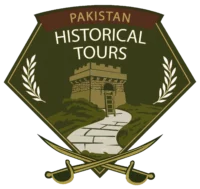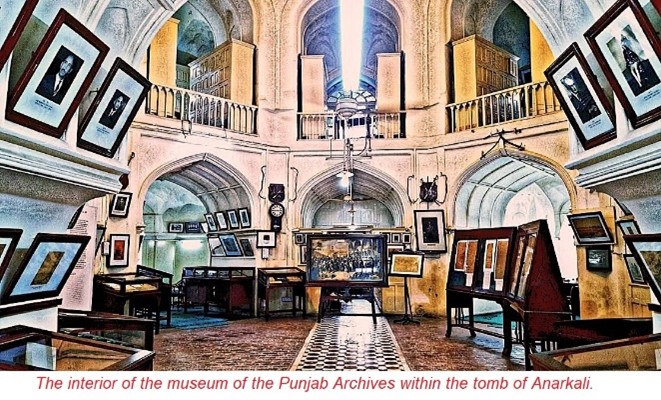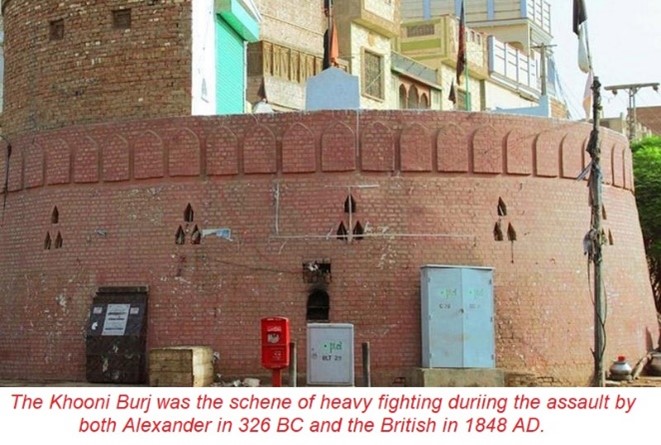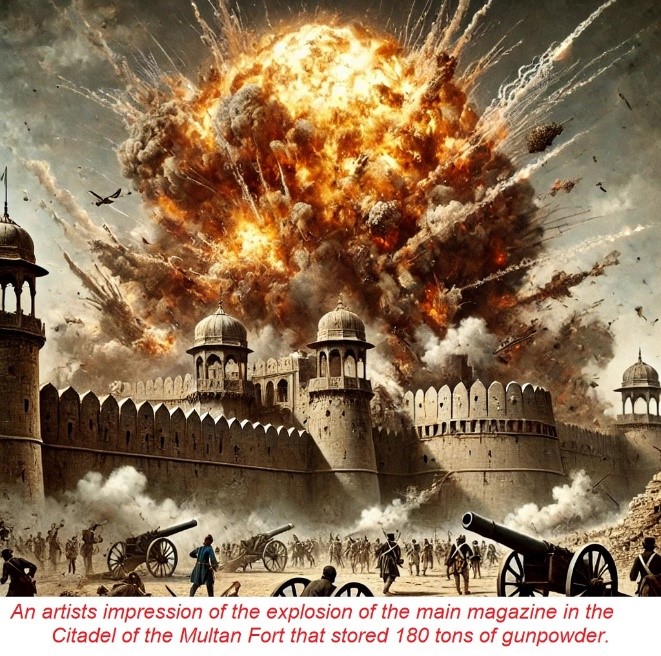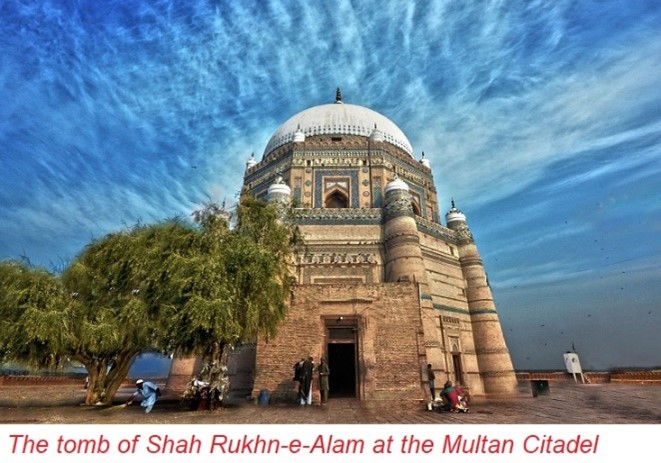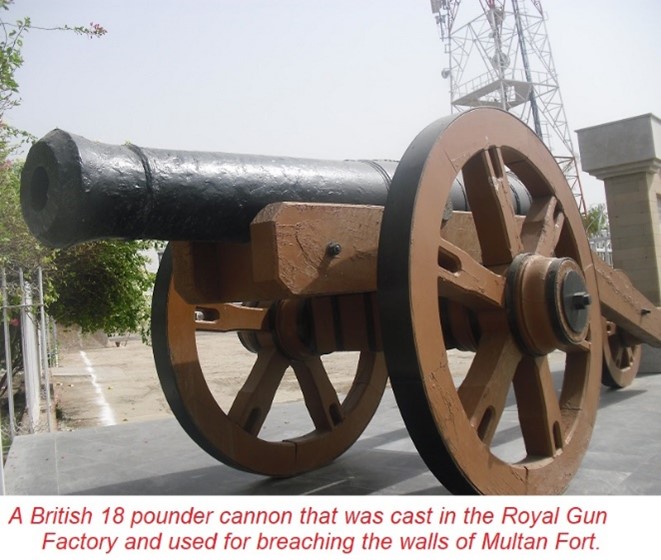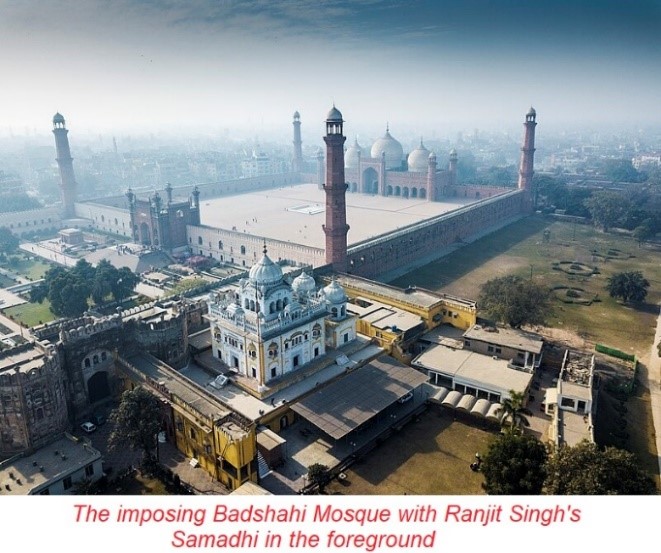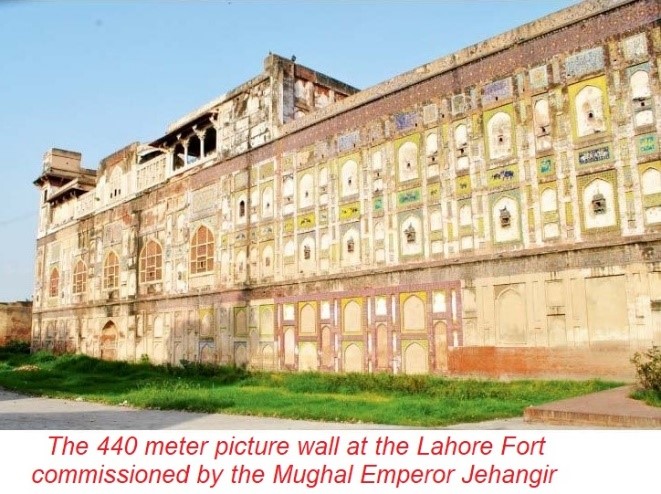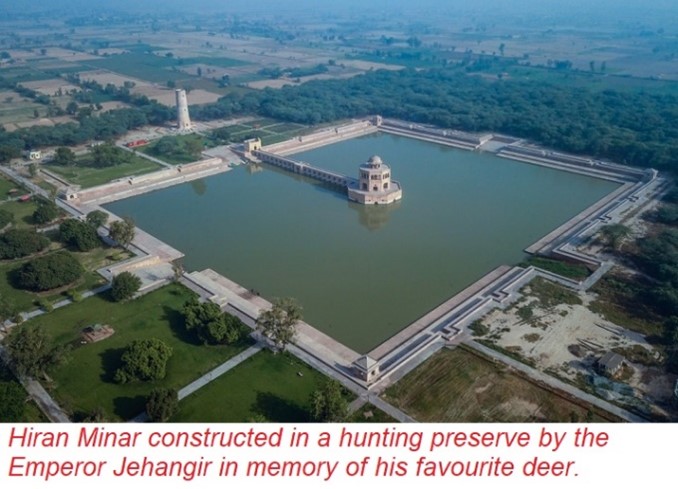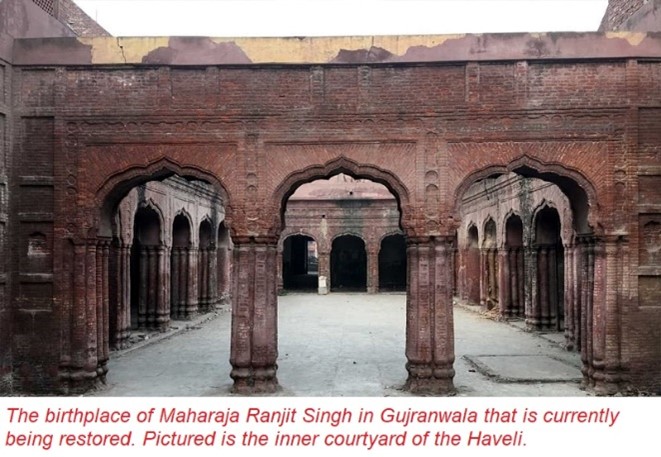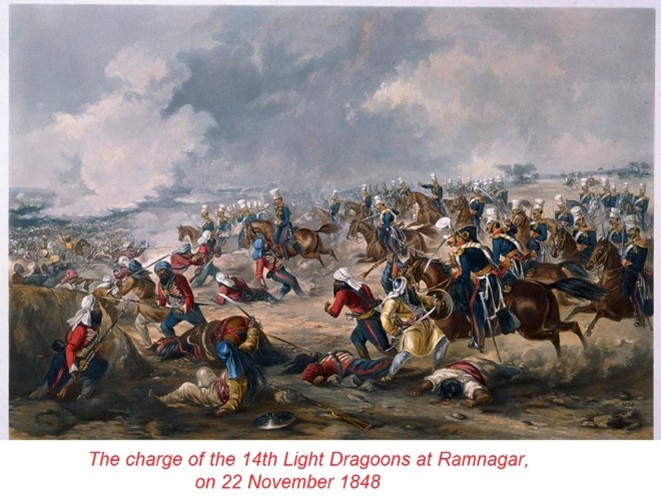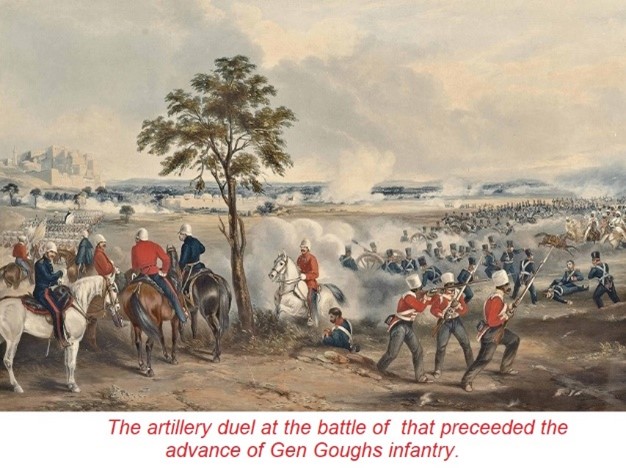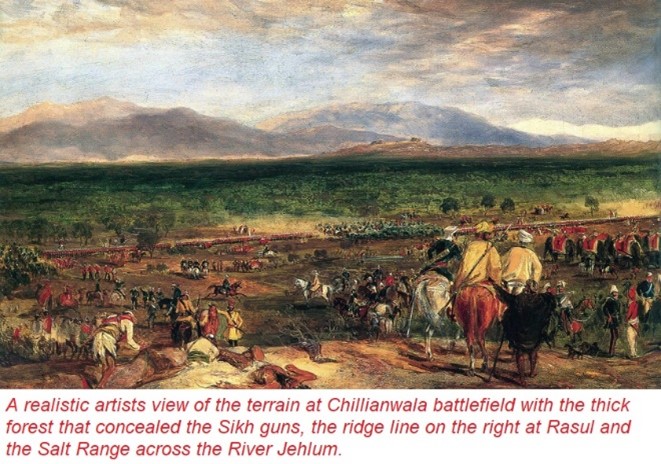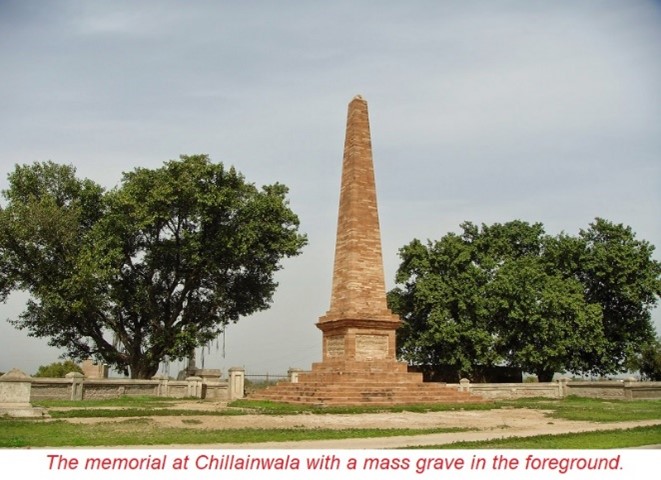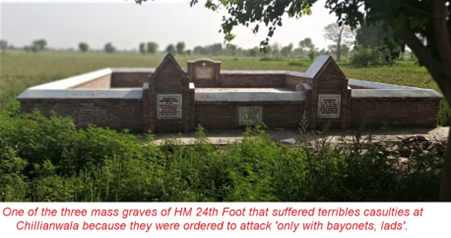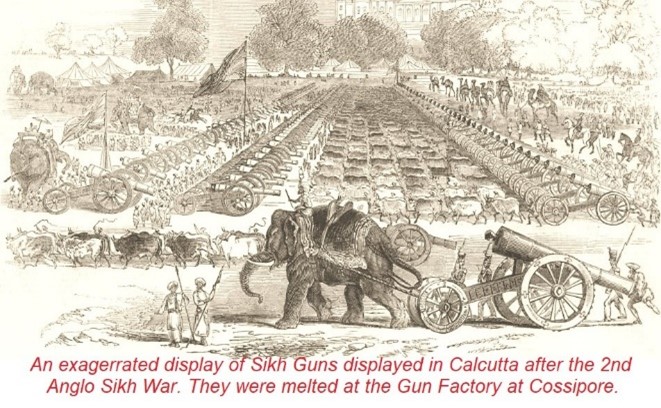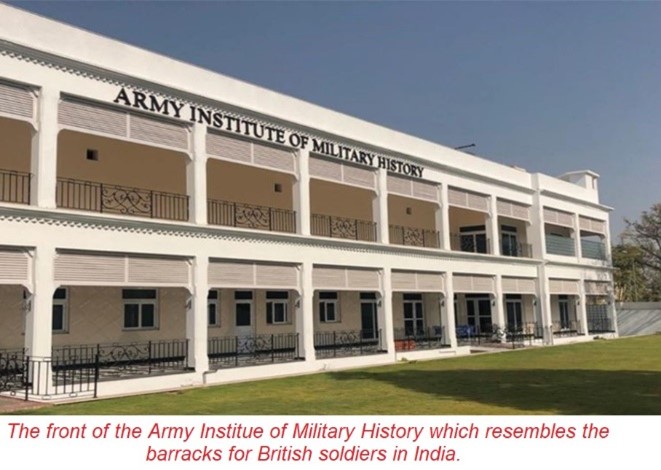Clash Of Empires Tour
Adding item to wishlist requires an account
Don't have an account? Create one.
Booking Enquiry
Tour Details
In the first half of the 19th century, the northwest frontier of the Indian subcontinent became the stage for a dramatic three-way struggle between the declining Durrani Empire of the Afghans, the rising Sikh Empire under Maharaja Ranjit Singh, and the ever-expanding British East India Company.
Departure & Return Location
Lahore – Rawalpindi
Departure Time
8:00AM
Price Includes
- ✔ Pick & Drop
- ✔ Dedicated Driver with Private Grand Cabin
- ✔ 2 Quality meals per day
- ✔ Tour Guide
- ✔ Fuel for Vehicle Covered in Tour Plan
- ✔ Jeep Ride
- ✔ All Toll and Taxes included
Price Excludes
- ✖ Any item not mentioned above
- ✖ Lunch
- ✖ Medication, evacuation and rescue etc. in emergencies
- ✖ Personal insurances of clients
- ✖ Laundry & phone calls or other expenses of personal.
Itinerary
Day 1:(Arrival in Lahore)
- Nearly all the flights from abroad arrive at Lahore Airport early morning onwards. You will be received and taken to a comfortable 4 Star Hotel to rest after your long journey. That evening your tour guide will take you for a Welcome Dinner of traditional BBQ.
Day 2:(Lahore)
- Today is a full day tour of places of our interest in Lahore. Our First stop will be the Punjab Archival Museum located in the Tomb of Anarkali.
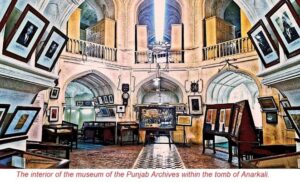 She was a legendary dancer who is said to be loved by the 16th-century Mughal Prince Salim, who later became Emperor Jahangir. This Museum was established in 1924 and documents of historical and national importance have been exhibited in show cases. We then embark on a fascinating tour of the Lahore Walled City which is being restored by the Punjab Government.
She was a legendary dancer who is said to be loved by the 16th-century Mughal Prince Salim, who later became Emperor Jahangir. This Museum was established in 1924 and documents of historical and national importance have been exhibited in show cases. We then embark on a fascinating tour of the Lahore Walled City which is being restored by the Punjab Government.
Our next stop is the famous and sprawling Anarkali Bazaar which is one of the oldest surviving markets in the Indian Subcontinent, dating back at least 200 years. We will have a classic lunch at the ‘Old Anarkali Bazaar’ noted for its traditional food, and spend the afternoon in the ‘New Anarkali Bazaar’ where you can shop traditional handicrafts and embroidery. Our second last stop is to visit the tomb of Ranjit Sings most trusted French officer, General Jean-François Allard, who became the leader of the Maharaja’s corps of European officer. He was a charming and gentle man, very different from some of the other European mercenaries in the Punjab and made the effort to learn Persian, which was the court language. Our last stop is Sang-e-Meel Publishers who specializes in reprinting many old books and gazetteers of the Raj era.
Day 3:(Multan)
- Leave the hotel early to catch the Khyber Mail which departs at 07:40 and arrives in Multan by 13:20. After check in and freshening up at a comfortable hotel, we will drive around the old city to the TEVTA Institute of Blue Pottery Development which also has a factory and sales center. Multani blue pottery, also known as Kashigari, traces its origins traced to the arrival of artisans from Kashan and Kashgar in 712 AD after the conquest by Muhammad bin Qasim. From here it is a short drive to the Khooni Burj (Bloody Bastion) which is a remnant of the city’s fortifications destroyed by the British in 1849.
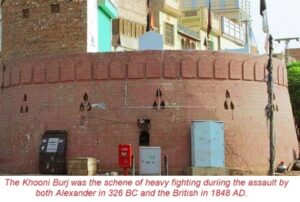
It is believed that Alexander the Great was injured here in 325 BC while scaling the walls and his soldiers took such horrendous revenge that the place was filled with blood. During the Siege of Multan in 1849, the bastion was once again the site of fierce fighting this time between Sikh troops and the 1st Bombay Fusiliers. Dinner will be at the iconic Multan Garrison Club a heritage site which has been beautifully restored. It was constructed by the Nawab Bahawalpur in 1880 on the lines of Turkish architecture and contains 13 domes of different size.
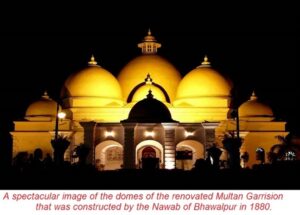
Day 4:(Multan & return to Lahore)
- The siege of Multan began on 19 April 1848 and lasted until 22 January 1849. It was the second siege that it had faced after Ranjit Singh captured it in in 1818. Multan was a rich city and the chain of events to the crisis commenced when the British Commissioner in Lahore demanded that Mulraj the Governor pay duties and taxes previously paid to the central Durbar of the Sikh Empire and now in arrears. This was followed by Mulraj’s abdication; the arrival and murder of the British Political Agent and his assistant and the revolt in Multan. The muted response by the British chain of command right up to Delhi was offset by the successful crossing of the River Chenab by irregular troops assembled by the British Political Agent in Bannu, Lieutenant Herbert Edwardes, and reinforced by troops from Bahawalpur and the Khalsa. But the first attempt to lay siege failed because the Khalsa troops withdrew. A second siege was laid late in November when Whish was reinforced by a substantial force from the East India Company’s Bombay Army.
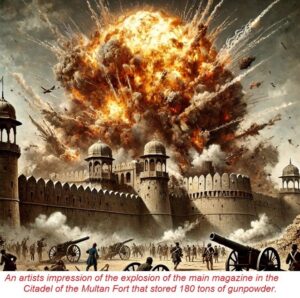 After a month of bombardment, 4 columns cleared the outskirts and breaching batteries was deployed to breach the wall. On 30 December, the main magazine with 180 tons of gunpowder in the citadel was hit and exploded, creating a gigantic fireball and shockwave engulfing part of the fort and killing 800 of the defenders. 2 January 1849 the attackers successfully scaled the breaches and after heavy house to house fighting, reached the citadel which held out for another couple of weeks. The citadel was badly damaged and further damage resulted after the heavy floods of August 1849. It was never fully reconstructed in its original form, as during its redevelopment by the British they chose to level much of the fortifications to make way for administrative and military buildings. However, key religious structures within the citadel, such as the tombs of saints, were preserved and restored over time and we will visit the Tomb of Shah Rukn-e-Alam, one of Multan’s most iconic landmarks.
After a month of bombardment, 4 columns cleared the outskirts and breaching batteries was deployed to breach the wall. On 30 December, the main magazine with 180 tons of gunpowder in the citadel was hit and exploded, creating a gigantic fireball and shockwave engulfing part of the fort and killing 800 of the defenders. 2 January 1849 the attackers successfully scaled the breaches and after heavy house to house fighting, reached the citadel which held out for another couple of weeks. The citadel was badly damaged and further damage resulted after the heavy floods of August 1849. It was never fully reconstructed in its original form, as during its redevelopment by the British they chose to level much of the fortifications to make way for administrative and military buildings. However, key religious structures within the citadel, such as the tombs of saints, were preserved and restored over time and we will visit the Tomb of Shah Rukn-e-Alam, one of Multan’s most iconic landmarks. 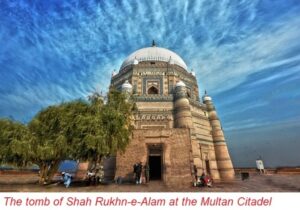
The graves of the two British emissaries were removed from the bastion, and the bodies re-buried in the citadel. We will visit the monument dedicated to Van Alexander Agnew who was of one of the sharpest political agents of the East India Company. Given time we will have a look at a specimen of breaching gun resting in the Qasim Bagh.
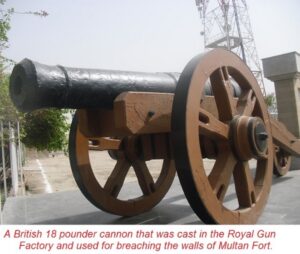
Its caliber is 5.5 inches it could fire an 18-pound projectile up to 2000 yards. It was manufactured in 1808 A.D.in Royal Gun Factory by British and was used in Siege of Multan where it breached the city wall near the Khooni Burj. Back to the hotel for lunch and then catch the Musa Pak Express at 16:00 and arrive back in Lahore for the night at 21:15.
Day 5:(Lahore)
- Our morning commences with a tour of the complex containing the Badshahi Mosque, Rajit Singh’s Samadi, the Lahore Fort & Tosha Khana. On our way we will stop to see the famous cannon Zamzama (Kipling’s famous Kim’s Gun) that was cast by Ahmed Shah Abdali but used by Ranjit Singh during the 1918 Siege of Multan.
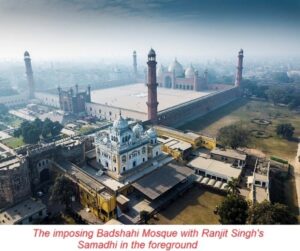 The Badshahi Mosque was completed in 1673 by the Mughal Emperor Aurangzeb with an exterior that is decorated with carved red sandstone with marble inlay. During the rule of Ranjit Singh, it was used as a stable and soldiers’ quarters and the British Empire used as a garrison. It is now one of Pakistan’s most iconic sights. Next door is Ranjit Singh Samadhi which commemorates Maharaja and houses his funerary urn.
The Badshahi Mosque was completed in 1673 by the Mughal Emperor Aurangzeb with an exterior that is decorated with carved red sandstone with marble inlay. During the rule of Ranjit Singh, it was used as a stable and soldiers’ quarters and the British Empire used as a garrison. It is now one of Pakistan’s most iconic sights. Next door is Ranjit Singh Samadhi which commemorates Maharaja and houses his funerary urn.
The heart of the Citadel of the Walled City was almost entirely rebuilt in the 17th century, when the Mughal Empire was at the height of its splendor and opulence.
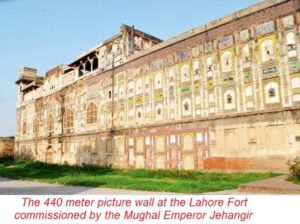
Successive emperors added the imposing 6,600 sqm picture wall, the Naulakha (nine hundred thousand) made of prominent white marble, and known for its distinctive curvilinear roof. It served as Emperor Jehangir’s personal chamber and was inlaid with precious and semi-precious stones. Rudyard Kipling, named his Vermont home Naulakha in honor of the pavilion. To its east of is Sheesh Mahal, elaborately decorated with a myriad of reflective glass tiles and further round the quadrangle is the marble balcony from where Emperor Akbar used to sit for his audience. Ranjit Singh used the fort’s Summer Palace as his own residence and the British used it as an armory and constructed barracks for troops. Our last stop for the morning is a visit the Fakir Khana which is the largest privately owned museum in South Asia. It is owned by the Fakir family and three of their ancestors, served as emissaries to Maharaja Ranjit Singh.
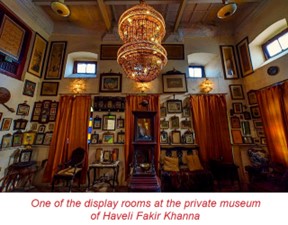
After a well-deserved but quick lunch at the food pavilions overlooking the mosque, we head out of Lahore to see the fort at Sheikhupura which was constructed by the Mughals and later occupied by Ranjit Singhs mother who had a considerable role in its rehabilitation and lived in it to her last day. The fort was also used for the ‘house arrest’ of the Maharaja’s last queen, Maharani Jind Kaur the mother of Maharaja Duleep Singh. It is currently undergoing restoration.
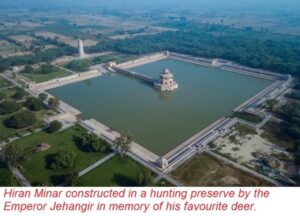
Having come this far we must not miss Hiran Minar (the Deer Tower) with its massive 62,000 sqm water-tank pool for wild game to drink. We will wait till dusk to see it illuminated before returning back to the hotel for a late dinner.
Day 6:(Gujranwala, Haveli Rajit Singh & Rasulnagar)
- We bid farewell to Lahore and head for the city of Gujranwala which was an important trading center and a political, military, and strategic hub. At Gujranwala we will visit the Haveli (residence) and place of birth of Maharaja Ranjit Singh in the heart of the old city so be prepared for tortures drive down crowded lanes. Ranjit Singh who was born into the Sukerchakia Misl (a semi-independent confederacy of warriors), which laid the foundation for the Sikh Empire. The Haveli stands in a small square in the old part of Gujranwala city and the red brick structure bears Mughal and Rajput architectural influences. It lay in a state of neglect since Partition till restoration began in 2024, and you will be fortunate to see it near fully restored.
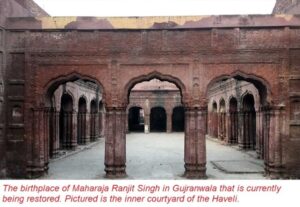 Skirmish at Ram Nagar. Our last destination before we get to Gujrat for the night is where before the Battle of Chillianwala, a skirmish occurred at Ram Nagar (renamed Rasul Nagar) in which the British Cavalry was bested by the Sikh troops holding a strong defensive position astride the River Chenab. Having assembled a large army and moved to an area northwest of Lahore, in the early hours of the morning of 22 November, Gough ordered a force of cavalry and horse artillery, with a single infantry brigade, to move to the Chenab crossing near Ram Nagar, apparently intending to capture the position by surprise. The Sikhs occupied strong positions on both banks of the river and on an island in mid-stream. At the end of the Monsoons, the river was only a narrow stream, but its wide bed was treacherous soft sand.
Skirmish at Ram Nagar. Our last destination before we get to Gujrat for the night is where before the Battle of Chillianwala, a skirmish occurred at Ram Nagar (renamed Rasul Nagar) in which the British Cavalry was bested by the Sikh troops holding a strong defensive position astride the River Chenab. Having assembled a large army and moved to an area northwest of Lahore, in the early hours of the morning of 22 November, Gough ordered a force of cavalry and horse artillery, with a single infantry brigade, to move to the Chenab crossing near Ram Nagar, apparently intending to capture the position by surprise. The Sikhs occupied strong positions on both banks of the river and on an island in mid-stream. At the end of the Monsoons, the river was only a narrow stream, but its wide bed was treacherous soft sand.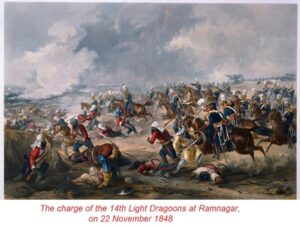
At dawn, the first British charge by 3rd Light Dragoons and 8th Bengal Light Cavalry drove some Sikhs back across the river from positions on the east bank but concealed Sikh batteries opened fire and the British cavalry had difficulty extricating themselves from the soft ground. The Sikh artillery played a significant role in the breaking up the British cavalry in subsequent two charges and supporting the counter charges by the Sikh Cavalry. After a third charge failed, Brigadier C.R. Cureton, commanding the cavalry division galloped up and ordered a retreat but was then killed by musket fire. In all the British casualties were 26 killed or missing and 59 wounded and a small memorial with the grave of grave of the brigadier and a few others was erected at Rasulnagar.
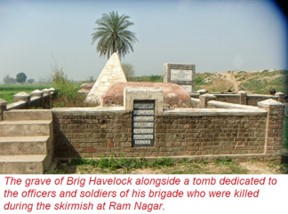
The Sikh forces under Sher Singh had won a victory and their moral was further reinforced when the Sikh artillery checked a British cavalry division at Suddalpore after is made a flanking move by crossing the river upstream at Wazirabad. It was an ominous prelude to the bloody battle of Chillianwala. From Rasulnagar it is an hour’s drive to Gujrat where we will spend the night.
Battle of Gujrat – 21 Feb 1849. Unfortunately, the city of Gujrat has spread to the area where the battle took place but from the roof of a building close to where Gen Gogh had located himself, we can get an idea of the locations of the significant villages and the course of the battle. The Army of Sher Singh had been reinforced by his father and troops from Hazara and a contingent of Afghan cavalry but the army was running out of supplies and could not get to its bases in central Punjab. He withdrew towards Gujrat and constructed a double entrenchment, which was also protected by a ravine. Most of the artillery was grouped in a central battery, with the cavalry deployed on the flanks.
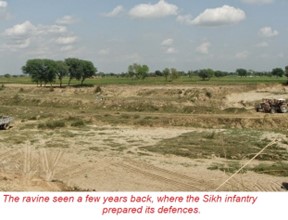
After direct orders from the Governor General, Gen Gogh whose relief had not yet arrived having been dismissed after the debacle at Chillianwala, opened the battle with his superior advantage in artillery. British had approximately 100 guns, including a powerful contingent of heavy field and horse artillery that had joined after relieving the siege of Gujrat, versus the Sikhs artillery of 60 primarily lighter field guns. Gough halted the advance of his infantry when the Sikh artillery opened fire from hastily camouflaged location (nothing like the forest that concealed it at Chillianwala), and brought his guns to bear.
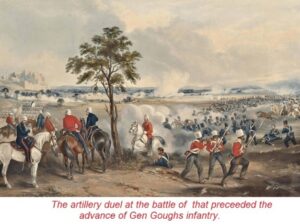
In a three-hour artillery duel, the Sikhs were forced to abandon their guns. Sources were later to refer to the battle as the “Battle of the Guns”. Once the Sikh artillery was largely silenced, the British infantry advanced. There was desperate hand-to-hand fighting for the small fortified villages of Barha (Big) Kalra and Chota (small) Kalra but the British guns advancing in successive “bounds”, enfiladed the Sikh infantry in the centre of their position. Flanking moves by the Sikh Cavalry were neutralized by the British Guns and charges by the cavalry. When the Sikh position broke, the Bengal Horse Artillery and British and Indian cavalry took up a ruthless and merciless pursuit of 19 kms which turned into a rout of the Sikh army.
Day 7:(Battlefield of Chillianwala)
- Today we will visit the battlefield of Chillianwala. From Gujrat it is only an hour’s drive to the Chillianwala Memorial located on a mound where the British field hospital was established during the battle. The Battle or Chillianwala was fought on 13 Jan 1849.
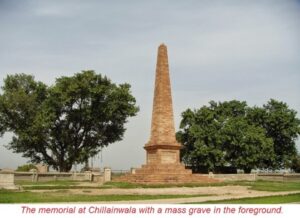 Sher Singh had withdrawn to the north after the engagements at Rasulnagar and Suddulpor and Gough waited for instructions from Governor General Dalhousie and reinforcements from Multan. However, the siege was not yet over and the Afghan cavalry had cleared the way for Chattar Singh’s army to leave Hazara and link up with Sher Singh. Dalhousie ordered Gough to seek out and destroy Sher Singh’s main army before the Sikh armies could combine, without waiting for reinforcements from the army at Multan.
Sher Singh had withdrawn to the north after the engagements at Rasulnagar and Suddulpor and Gough waited for instructions from Governor General Dalhousie and reinforcements from Multan. However, the siege was not yet over and the Afghan cavalry had cleared the way for Chattar Singh’s army to leave Hazara and link up with Sher Singh. Dalhousie ordered Gough to seek out and destroy Sher Singh’s main army before the Sikh armies could combine, without waiting for reinforcements from the army at Multan.
Gen Gogh’s army marched towards the extended Sikh positions reported on the ridges at Rasul and planning to outflank them but Sher Sing moved his troops forward into a compact defence with the artillery concealed in a forest.
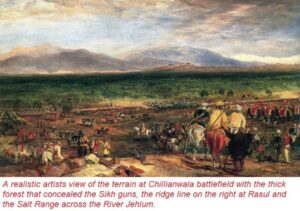
The battle began in the afternoon when reacting to shelling of his camp by Sikh artillery, General Gough ordered a direct frontal assault without proper reconnaissance. The ground soft and muddy due to heavy winter rains, making movement difficult for both infantry and cavalry and the dense jungle already challenging, became even more treacherous due to the damp conditions, which slowed the British advance by two divisions and disrupted their formations. The Sikhs, entrenched behind natural defenses and artillery, unleashed devastating fire, causing chaos in the British ranks. On the left flank, the British cavalry, including the 14th Light Dragoons, charged but was repulsed, suffering heavy losses.
In the center, the British infantry, led by Her Majesties 24th Foot, was caught in a deadly crossfire and nearly overrun. On the right flank, the Sikh cavalry counterattacked, capturing British cannons and regimental colors. As night fell, both armies disengaged, with the British suffering over 2,300 casualties—one of their worst losses in India—while the Sikhs held the field. At night they roamed through the carnage slashing and killing the wounded soldiers of Goughs army. While driving through the battlefield we will stop at the mass graves of HM 24 Foot, two of which have been fully restored.
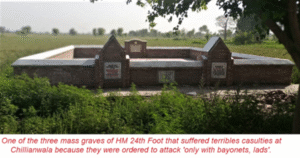
Over 50 percent of the casualties inflicted by the Sikhs befell the unfortunate HM 24th Foot, which was ordered not to fire but use their bayonets. On hearing about the casualties, Lord Dalhousie remarked, “We cannot afford another such victory.” The British would get their revenge during the pursuit of the remnants of the Sikh army after the Battle of Gujrat. The remnants of Sher Singh’s forces retreated for eleven days, but he was forced to surrender his army which had been reduced to 20,000 men (mainly irregular cavalry) and 10 guns. In a two day’s ceremony near the Buddhist Stupa at Mankiari, at which wed will stop, the soldiers handed over their arms with tears in their eyes. All the captured weapons (less guns) were melted and the steel was used for girders in the Church at Sialkot while the guns were transported all the way to Calcutta to be first placed on display and subsequently melted at the gun factory at Cossipore. We will spend the night at Rawalpindi.
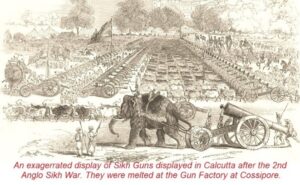
Day 8:(Rawalpindi, Attock, Peshawar)
- At Rawalpindi we will be given a tour of the Army Institute of Military History. The Institute will also present a talk on the Evolution of the Sikh Army with emphasis on the development of its artillery followed by refreshments. We will then head north on the GT Road stopping to see the memorial of Gen Nicolson who was one of the best Political Officers and instrumental in the establishment of the North-West Frontier after the end of the Sikh rule. His arrival at the Siege of Delhi in 1857 was said to have had the impact of an entire division on the morale of the troops. He was killed during the final assault.
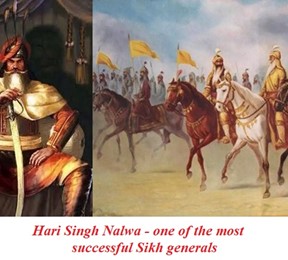 Heading towards Peshawar we will turn off the GT Road to Chhach to view the Battlefield of Attock where the Sikh Army commanded by Diwan Mohkam Chand defeated an Afghan Army comprising mostly of cavalry and commanded by Dost Muhammad.It was the first test of Ranjit Singh’s new army when in early 1813, the Durrani-appointed governor of Attock, defected and handed over Attock Fort to the Sikhs. A large Afghan Army marched from Kabul, crossed the Indus below the fort (probably at Khushalgarh) and laid siege.
Heading towards Peshawar we will turn off the GT Road to Chhach to view the Battlefield of Attock where the Sikh Army commanded by Diwan Mohkam Chand defeated an Afghan Army comprising mostly of cavalry and commanded by Dost Muhammad.It was the first test of Ranjit Singh’s new army when in early 1813, the Durrani-appointed governor of Attock, defected and handed over Attock Fort to the Sikhs. A large Afghan Army marched from Kabul, crossed the Indus below the fort (probably at Khushalgarh) and laid siege.
The Maharaja sent an army under Dewan Mokham Chand comprising of cavalry, artillery and one battalion of infantry. The two sides faced each other off on the plains of Chah because neither wanted to give battle in the brutally hot summer. By the end of 3 months the Afghans were running short of supplies and their access to water had been severely limited while the Sikhs were gaining in reinforcement. Finally, the two sides assembled for battle on 13th July about 8 kilometers northeast of Attock Fort, near the eastern bank of the Indus River.
During the battle, Dewan deployed his cavalry in three divisions with the battalion of infantry forming a square to protect the artillery which was commanded by Mian Ghous Khan. One of the divisions was commanded by Hari Singh Nalwa who was only 21 years old and would become one of Ranjit Singh’s greatest commanders and administrators. He captured Multan, Kashmir, Peshawar, and Hazara, and the city of Haripur is named after him. An opening charge by the Afghans was repulsed by the artillery but a second charge threw one wing of the Sikhs in disarray. However, the Dewan led a countercharge with the support of the Zamburaks and routed the Afghans.
We will then access the Motorway to drive to Peshawar and check into a Heritage hotel called The Barracks.
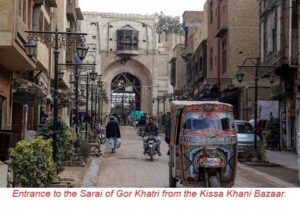
Day 9:(Peshawar)
- Our first event of the day will be a talk on the Battle of Jamrud & Peshawar. This will b followed by a visit to the Bala Hissar Fort the first mention of which was in 7th century. In recent history it was occupied by the Afghans and after capturing Peshawar, the Sikhs reconstructed the fort in March 1823. In 1849, the British East India Company reconstructed the fort’s outer walls.After lunch at the fort courtesy of the Frontier Corps Dr Ali Jan who is an authority on the history of Peshawar and its sites, he will take you on a tour of the old city. You will explore the alleys of the Kissa Kahani Bazaar (Bazaar of the Story Tellers), tour beautifully restored Sethi Havelis, and the complex of Gor Khatri (the tombs of the Khartri Tribe) Caravan Serai which was originally a site of Buddhist and Hindu significance, and later developed into a fortified caravanserai during the reign of Emperor Jahangir’s, for traders and travelers along the Silk Road.
Day 10:(Peshawar, Shabqadar Fort)
- Our second last day of the tour starts with visit to the famous Peshawar Museum which has a large display of ancient Buddhist Gandhara artwork. It’s then an hour’s drive to Shabqadar Fort, also known as Shankar Garh Fort. It was built in 1837 by the Sikhs under the direction of Maharaja Ranjit Singh, with the design attributed to architect Tota Ram. The fort is now used as a training center for the Frontier Constabulary and is a witness to history spanning almost 200 years — from being ruled by the Sikhs to the British and now Muslims. The fort has a great number of stories associated with it and also boasts a small museum with artefacts from the last two hundred years. The walls of the mess display antique guns and other memorabilia but the most fascinating part was the pictures of leaders and celebrities who visited the fort and the guest book.
Day 11:(Jamrud, Khyber Pass Landikotal)
- No visit to Peshawar can be complete without a drive up the Khyber Pass used by invaders to and from Afghanistan. Enroute will stop to visit the recently and well restored Jamrud Fort is located at the entrance to the Khyber Pass.
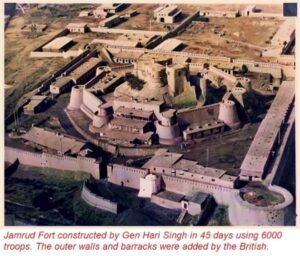 It was built by Hari Singh Nalwa, the versatile Commander-in-chief of the Sikh Khalsa Army, who captured Kasur, Sialkot, Multan & Kashmir, and expanded the frontiers of the Sikh empire beyond the Indus River till Jamrud in what was then the Afghan heartland. Employing 6,000 soldiers, he constructed the fort in 45 days, with walls 5.4m wide and 11m high. Security towers were also built and armed with cannons.
It was built by Hari Singh Nalwa, the versatile Commander-in-chief of the Sikh Khalsa Army, who captured Kasur, Sialkot, Multan & Kashmir, and expanded the frontiers of the Sikh empire beyond the Indus River till Jamrud in what was then the Afghan heartland. Employing 6,000 soldiers, he constructed the fort in 45 days, with walls 5.4m wide and 11m high. Security towers were also built and armed with cannons.
It is only a 45 minutes’ drive up the Khyber Pass to Landikotal and we will stop to view the fort of Ali Masjid from its base because it is a stiff climb of 600 ft till the top, but the view of the pass is quite spectacular.

After the First Anglo Afghan War, the Sikhs forces under General Paolo Avitabile (an Italian officer in Sikh service), advanced into the Khyber Pass to secure control over its eastern entrance. A fierce battle was fought against the Afghans at Ali Masjid in which Sikhs artillery bombard the Afghan positions. Eventually, they gained control of Ali Masjid, securing their hold over the eastern entrance of the Khyber Pass. During the 2nd Anglo-Afghan War, the British Peshawar Valley Field Force of 16,000, advanced through the Khyber Pass. The Afghan garrison at Ali Masjid, of only 3,500 held a strong defensive position on the steep heights surrounding the fort. The British launched a massive artillery bombardment with 24 field and mountain guns but the Afghan fortifications held strong in spite of their artillery being outgunned. It was only when the British troops executed a flanking movement along the surrounding heights, that the Afghan defenders abandoned the fort.
Our final destination is Landikotal, the highest point of the pass and the home to the Khyber Rifles who have kindly consented to offer you lunch in their historic mess. The Rifles were an irregular force raised during the 2nd Anglo-Afghan War by Robert Warburton, a charismatic British political officer. It was recruited primarily from the Afridi and Shinwari Pashtun tribes, who were once fierce opponents of the British.
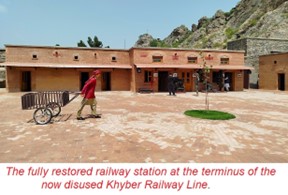
After lunch we will visit the recently restored Landikotal Railway Station which was the last stop of the now disused Khyber Railways built in 1925. It was an engineering marvel with 34 tunnels and 92 bridges. Though not operational today, you can still see the tracks, tunnels, and abandoned stations. Head back to Peshawar for the night.
Day 11:(Peshawar to Rawalpindi)
- On our last day of the memorable tour, we will visit the site of the battle of Nowshera 1823 fought between the Sikhs (commanded by the maharaja himself) and a combined Lashkar of Yusufzais’ & Khattaks commanded by Sayid Akbar Shah, son of Pir Baba of Buner. The Afghans had lost and retaken Peshawar from the Sikhs but now Ranjit Singh was determined to reclaim it for good. After crossing the Indus, he concentrated his forces at Akhora Khattak where he crossed River Kabul under fire—a bold and risky maneuver. However, he was determined to engage the lashkar before the arrival of reinforcements which were on the way. Ranjit Singh’s army of 25000 to 30,000 which included 1500 elite Gorkhas, 50-60 guns, 10,1000 trained infantry, and equal number of cavalry. The tribal lashkars of 5-6000 warriors was entrenched on the Pir Sabak heights and there was another large contingent on the Tarakai Hills two kilometers to the west.
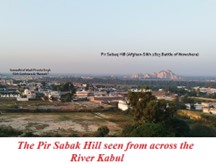
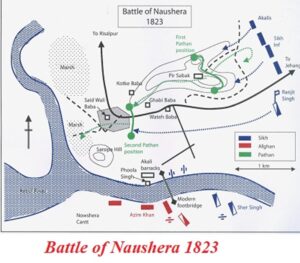
The battle opened with a charge by the Sikh Infantry which was beaten back. Next came the detachments of Sikh cavalry which would successively fire and withdraw. Suddenly the Lashkar made a wild charge onto the Sikh infantry which waived. The situation became grim for the Sikhs as their countercharge let by Phoola Singh was beaten back. It was the single Gurkha battalion which saved the day. It formed into a square and fired steadily into the advancing lashkar thus checking their advance. As the Lashkar fell back to their breastworks on Pir Sabak, the Sikh Infantry and Gurkhas stormed up the hill only to be beaten back after an hour of hand-to-hand fighting. It took three more charges by the Sikhs before the tribals broke. A stand attempted at the base of the hill was put to flight by a flanking attack by the Sikh cavalry.
Having roused the tribals to resist the Sikhs, Azim Khan Barakzai with an army of 5000 trained troops with guns, had set up his camp across the Kabul River opposite Pir Sabak, but remained passive, sending neither reinforcements nor attempting a crossing. The lashkar at the Tarakai hills, failed to come to the support due multiple reasons including poor leadership and lack of coordination. Before heading back to the Grand Trunk Road for Islamabad, we will visit the Akli (shrine) of Phoola Singh on the banks of the river. He was a soldier saint who united the Misils of Amritsar and served as a general in many famous Sikh battles up until his martyrdom in the battle. On the way back we will stop to have a view of the Attock Fort from across the River Indus.
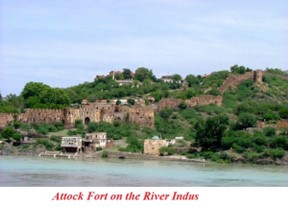
On arriving at Islamabad, you will check into a hotel to wait for the departure of your flights most of which depart abroad between 6-9 am the next morning.
